Repackaging an installation on a VMware virtual machine
The following article uses options that are available starting with the Architect edition and project type.
This guiding article will teach you how to create a project based on capturing an installation. We will repackage the 7-zip File Manager EXE into an MSI and use this as an example.
The steps below explain how to select a virtual machine environment. If you prefer to do
the repackaging on your own local computer, you may need to follow the Application
Repackaging Tutorial - Repackage an Installation tutorial.
1. Create a Repackage Installation project
Start Advanced Installer from the desktop icon or from the "Start" menu (of course, if it isn't already running). When the program launches, choose the “Convert” > “Repackage Installation” project type.
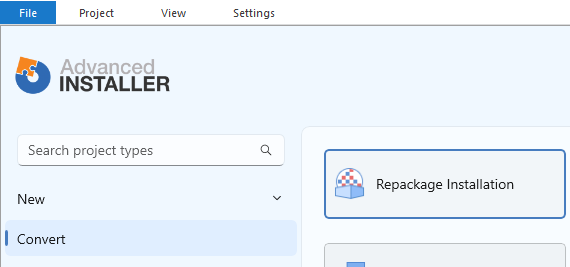
The Repackager launches and the project is saved as a .rpp file on disk.
2. Setting up the Repackager
After you select what installer you want to repackage, you can begin configuring the operation.
2.1 Package Information
This is where the installer's package information is presented. You may also utilize the "Additional packages" link to add multiple/additional programs to be repackaged at the same time. For more information about this tab see this page.

2.2 Customize Options
The Options tab enables you to customize the repackaging operation's actions and parameters. Find out more about this by visiting this page.
There are a few choices that are enabled by default, but we additionally check "Generate.bat file with settings from this session" for this lesson, which generates a .bat file for future repackaging operations automation.
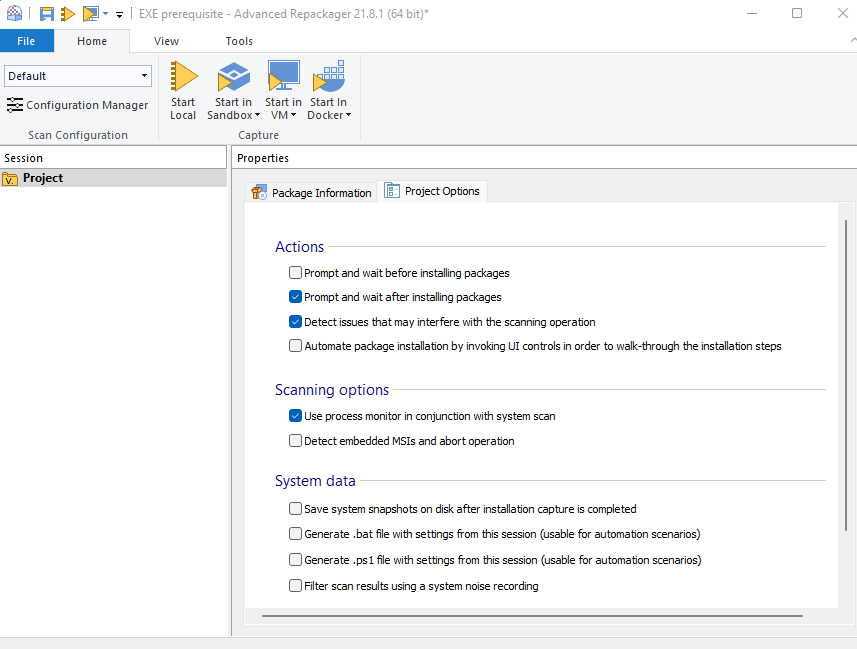
2.3 Select a virtual machine profile
Select/configure a virtual machine profile by pressing on the down arrow on the "Start in VM" button and selecting "Edit Virtual Machine profiles."

In the Virtual Machine Profiles dialog select an existing profile or create one by right-clicking on localhost from the VMware Servers section and selecting "New profile."
Select your "Virtualization product," "Virtual Machine," and snapshot.
Make sure the username selected has admin privileges on the virtual machine.

It is essential you first prepare the virtual machine before starting your first
capture. Please check the requirements for repackaging in
VMware machines to make sure your environment is correctly setup.
2.4 Create an installation profile
Press the "Configuration Manager" button from the Home tab and begin to customize your capture profile.
Create a new profile "MyProfile," which we have tweaked to search for system changes only in the "ProgramFiles" folder and in the "HKEY_LOCAL_MACHINE" registry hive, as the setup package installs per machine. All the other settings remained as in the "Default" profile.
We activated this newly created profile. Unless otherwise selected at the start of the installation capture, the "active" profile is the one that is utilized during the system scan.
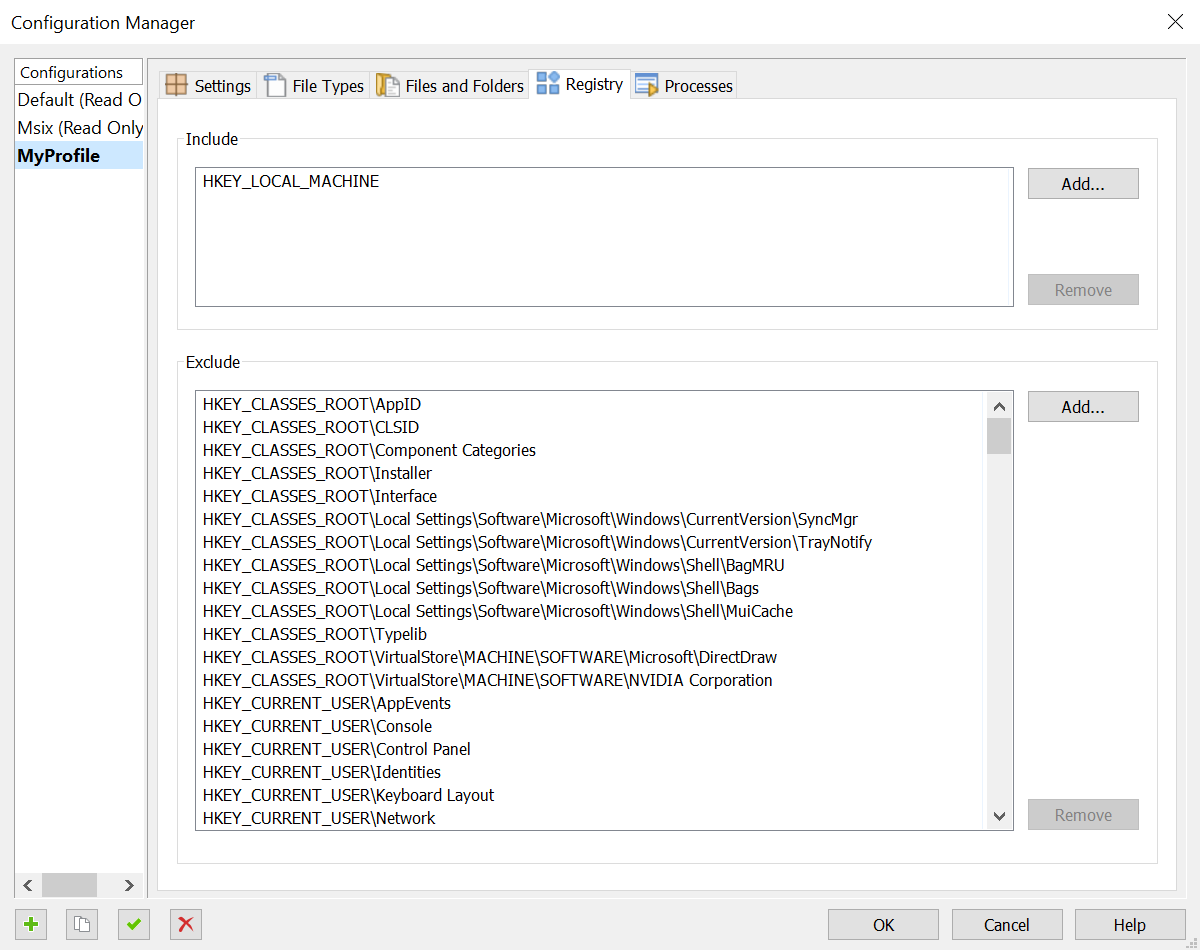
3. Installation capture
Before you begin the installation capture, ensure that all unneeded operating apps are closed to avoid "false positive" capture results from active file and registry system access.
Comparing system snapshots collected before and after the package installation is used to create an installation capture. You may optionally filter the scan data using a system noise recording.
To begin the installation press the "Start in VM" button ![]() .
.
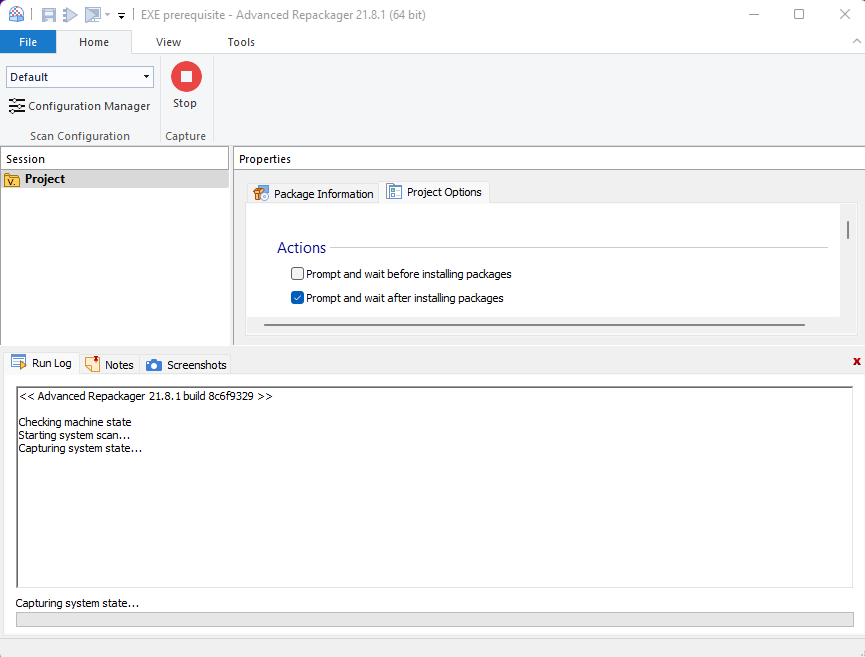
4. Package installation
The package is launched, and after the installation is complete, the system is scanned again for changes.
The result is saved as a session under History and as a .rpk file on the disk.
To finish up the newly repackaged installer, click "Continue in Advanced Installer".
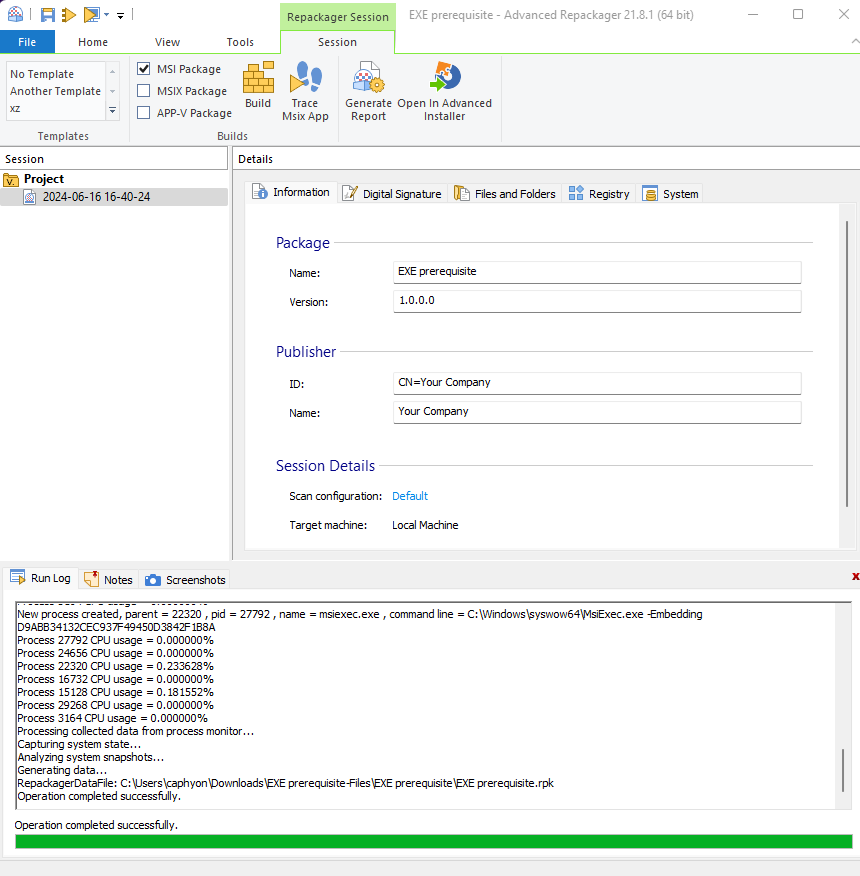
5. Import results
At this step you can start importing the installation capture results into the new Advanced Installer project. Click the button for this.
6. Customize the project
After you've imported the installation capture data, go over the Advanced Installer project and make any necessary changes to meet your new package deployment needs.